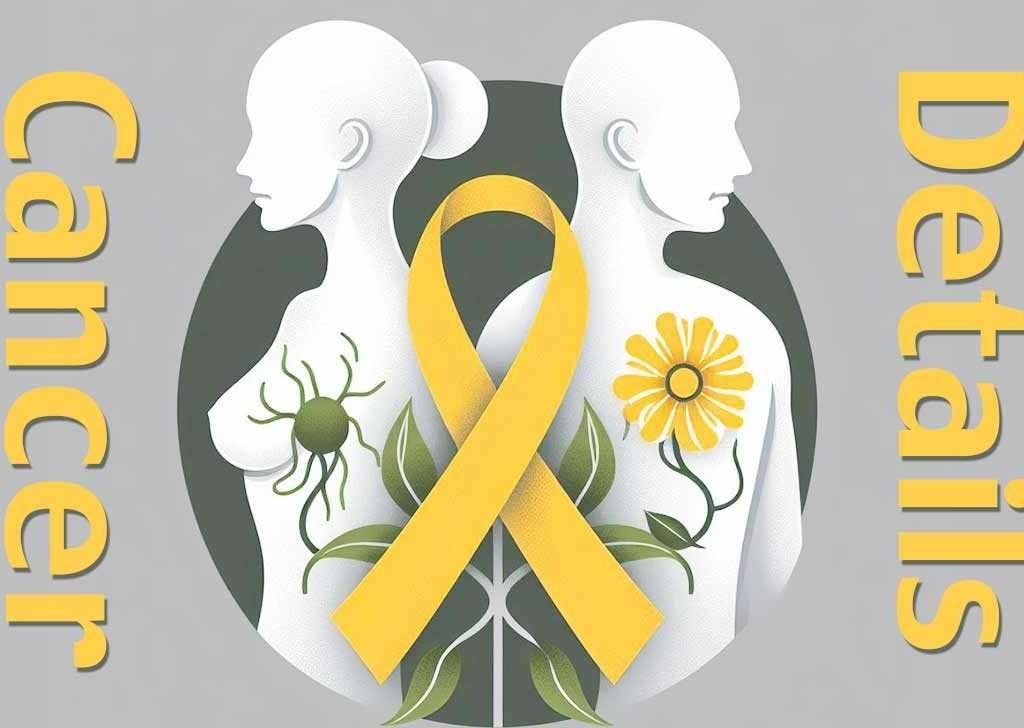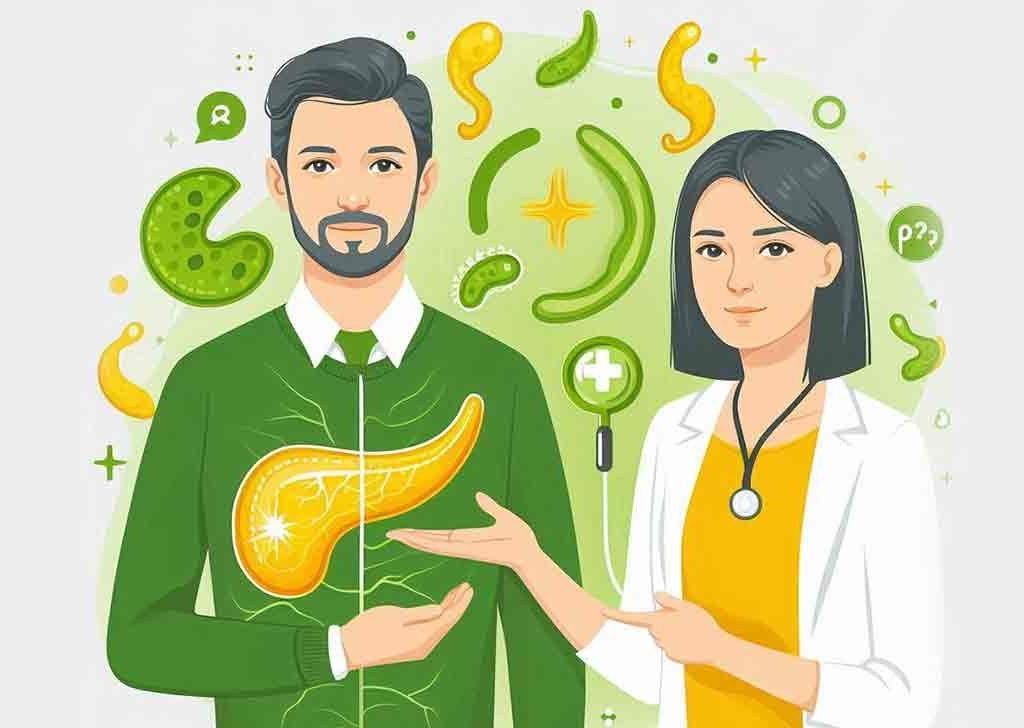Cancer deaths among men are projected to rise significantly in the coming decades, with an estimated 93% increase by 2050. This projection is based on various factors, including population growth, aging demographics, lifestyle factors, and disparities in healthcare access. Below is a detailed breakdown of the entities and attributes associated with this concerning trend.
Projected Increase in Cancer Deaths:
- 93% Increase by 2050: The number of cancer deaths in men is projected to nearly double by 2050.
- Population Growth: The global population is expected to rise, contributing to the sheer increase in the number of cancer cases.
- Aging Population: As life expectancy increases, the aging male population is more susceptible to cancer due to the cumulative effects of risk factors over time.
Key Cancer Types Contributing to the Rise:
- Lung Cancer: Continues to be the leading cause of cancer death among men, driven by high smoking rates in many countries.
- Prostate Cancer: A significant increase in deaths is projected, particularly in regions with aging populations.
- Colorectal Cancer: Rising incidence due to lifestyle factors like poor diet, obesity, and lack of physical activity.
- Liver Cancer: Increasing, particularly in developing countries due to risk factors like hepatitis B/C and alcohol consumption.
- Pancreatic Cancer: Known for its poor prognosis, is expected to become a more common cause of death due to low survival rates.
Contributing Factors to the Increase:
- Lifestyle Factors: Smoking, alcohol consumption, obesity, and a sedentary lifestyle contribute to increased cancer risks.
- Environmental Exposure: Pollution and exposure to carcinogens in certain occupations or geographic areas.
- Dietary Factors: Diets high in processed foods, red meat, and low in fruits and vegetables are linked to various cancers.
- Alcohol Consumption: A significant factor in the rise of cancers such as liver, esophageal, and head and neck cancers.
- Smoking: Still a leading cause of lung cancer and other smoking-related cancers.
Geographic and Socioeconomic Disparities:
- High-Income vs. Low-Income Countries: The burden of cancer is expected to rise disproportionately in low- and middle-income countries, where access to healthcare and early detection is limited.
- Healthcare Disparities: Access to cancer treatments, early detection, and preventive care varies significantly between countries and regions, affecting survival rates.
- Urbanization: Increased exposure to environmental pollutants, and lifestyle changes associated with urban living, may drive cancer incidence.
Preventive and Early Detection Measures:
- Smoking Cessation: Public health efforts to reduce smoking rates are crucial in preventing lung and other smoking-related cancers.
- Cancer Screening Programs: Programs targeting early detection of cancers like prostate, colorectal, and lung cancer can improve survival rates and reduce mortality.
- Vaccination Programs: Vaccines for hepatitis B (which can prevent liver cancer) and human papillomavirus (HPV, related to several cancers) are critical in prevention efforts.
- Healthy Lifestyle Promotion: Public health initiatives encouraging healthy eating, regular physical activity, and reducing alcohol consumption are key in prevention.
Treatment Advances and Challenges:
- Immunotherapy: Advances in immunotherapy are providing new hope for treating cancers that were once considered difficult to manage.
- Personalized Medicine: Targeted therapies and genetic profiling allow for more individualized cancer treatments, improving outcomes for certain cancer types.
- Access to Treatment: Access to advanced cancer treatments remains a challenge, especially in low- and middle-income countries.
- Cost of Treatment: The rising cost of cancer care, including new drugs and therapies, poses a financial burden for many patients and healthcare systems.
- Drug Resistance: Some cancers are developing resistance to existing treatments, which complicates long-term management and requires continuous research.
Public Health Impact and Economic Burden:
- Economic Costs: The rising number of cancer cases will place an increased financial burden on healthcare systems, particularly in countries with limited resources.
- Workforce Impact: As cancer affects working-age men, it could have a broader impact on productivity and economic stability, especially in regions with high cancer mortality.
- Health Inequities: Disparities in cancer outcomes are expected to widen unless significant investments are made in healthcare infrastructure and access.
Projected Cancer Deaths by Region:
- Asia: Expected to see the highest absolute increase in cancer deaths due to its large population and growing aging demographic.
- Africa: Though currently lower in cancer incidence, Africa is projected to experience a steep rise in cancer deaths due to increasing life expectancy and lack of healthcare infrastructure.
- Europe and North America: These regions, while having higher baseline cancer rates, are expected to see more modest increases due to better healthcare systems and preventive measures.
- Latin America: Rising cancer mortality is anticipated, driven by lifestyle changes, urbanization, and limited access to advanced treatments.
Global Response and Initiatives:
- World Health Organization (WHO): Global initiatives aimed at reducing cancer risks through lifestyle interventions and improving early detection and treatment, particularly in low- and middle-income countries.
- International Collaboration: Countries are working together to share research, develop affordable treatments, and implement cancer screening programs in underserved areas.
- Cancer Research Funding: Increasing investments in cancer research are critical to discovering new treatments and improving survival rates.
How can cancer deaths be prevented?
Cancer deaths can be prevented through a combination of lifestyle changes, early detection, and medical interventions. Here are the key approaches to preventing cancer deaths:
Lifestyle Modifications:
- Quit Smoking: Smoking is the leading cause of lung cancer and other types of cancer. Quitting smoking dramatically reduces the risk of cancer over time.
- Reduce Alcohol Consumption: Excessive alcohol use is linked to cancers of the liver, mouth, throat, esophagus, and breast. Limiting alcohol intake can lower cancer risk.
- Healthy Diet: A balanced diet rich in fruits, vegetables, whole grains, and lean proteins can reduce the risk of cancer. Reducing the intake of processed foods, red meat, and sugary drinks is also beneficial.
- Maintain a Healthy Weight: Obesity is a risk factor for several cancers, including breast, colorectal, endometrial, and kidney cancer. Regular physical activity and a balanced diet help maintain a healthy weight and reduce cancer risk.
- Physical Activity: Engaging in regular physical activity lowers the risk of various cancers, including breast and colorectal cancer. The recommendation is at least 150 minutes of moderate-intensity exercise per week.
2. Early Detection and Screening:
- Regular Cancer Screenings: Early detection through screenings increases the chances of successful treatment. Common screenings include:
- Mammograms: Detect breast cancer early.
- Colonoscopy: Screens for colorectal cancer.
- Pap Smears and HPV Testing: Detect cervical cancer or precancerous changes.
- PSA Test: Screens for prostate cancer.
- Low-dose CT Scans: Used for lung cancer screening in high-risk individuals.
- Self-Examinations: Regular self-exams for skin, breast, and testicular cancers can help detect any unusual changes early.
3. Vaccinations:
- Human Papillomavirus (HPV) Vaccine: Protects against HPV infections that can lead to cervical, throat, and other cancers. Vaccination is most effective when given to boys and girls before they become sexually active.
- Hepatitis B Vaccine: Protects against hepatitis B infection, which can lead to liver cancer.
4. Environmental and Occupational Safety:
- Avoid Exposure to Carcinogens: Limiting exposure to environmental carcinogens like asbestos, radon, and certain chemicals found in workplaces can reduce cancer risk. Implementing safety measures in the workplace is essential.
- Limit UV Radiation Exposure: Protecting the skin from harmful ultraviolet (UV) rays by wearing sunscreen, avoiding tanning beds, and wearing protective clothing can help prevent skin cancer.
5. Genetic Testing and Counseling:
- Identify Genetic Predispositions: Individuals with a family history of cancer may benefit from genetic testing and counseling. For example, mutations in the BRCA1 and BRCA2 genes significantly increase the risk of breast and ovarian cancers.
- Preventive Surgery or Medication: In some cases, preventive measures such as prophylactic surgery (e.g., mastectomy for those with high genetic risk) or medication (e.g., tamoxifen) can be used to reduce cancer risk in genetically predisposed individuals.
6. Infection Prevention:
- Prevent and Treat Infections: Certain infections are linked to cancer, such as hepatitis B and C (which can cause liver cancer) and the Epstein-Barr virus (linked to some lymphomas). Preventing and treating these infections can lower cancer risks.
7. Limit Radiation Exposure:
- Medical Imaging: Reducing unnecessary exposure to ionizing radiation from X-rays, CT scans, and other imaging tests can reduce the risk of radiation-induced cancers.
- Nuclear Safety: Ensuring proper safety measures are in place around nuclear facilities and minimizing exposure to radiation in high-risk occupations is important.
8. Education and Public Health Programs:
- Public Health Campaigns: Awareness campaigns can encourage cancer prevention behaviors, such as smoking cessation and sun protection.
- Access to Preventive Care: Expanding access to preventive healthcare services and screenings is essential for early detection, especially in underserved populations.
9. Global Health Initiatives:
- Reducing Cancer Inequalities: Efforts to reduce disparities in access to cancer prevention, screening, and treatment are critical. Low- and middle-income countries often lack the resources for widespread screening and prevention programs, leading to higher cancer mortality rates.
Conclusion:
Cancer deaths can be reduced through a combination of individual actions (such as lifestyle changes and participation in screening programs) and public health initiatives that promote early detection, vaccination, and environmental safety. Investments in research, healthcare infrastructure, and global cooperation are also key to addressing the growing cancer burden worldwide.
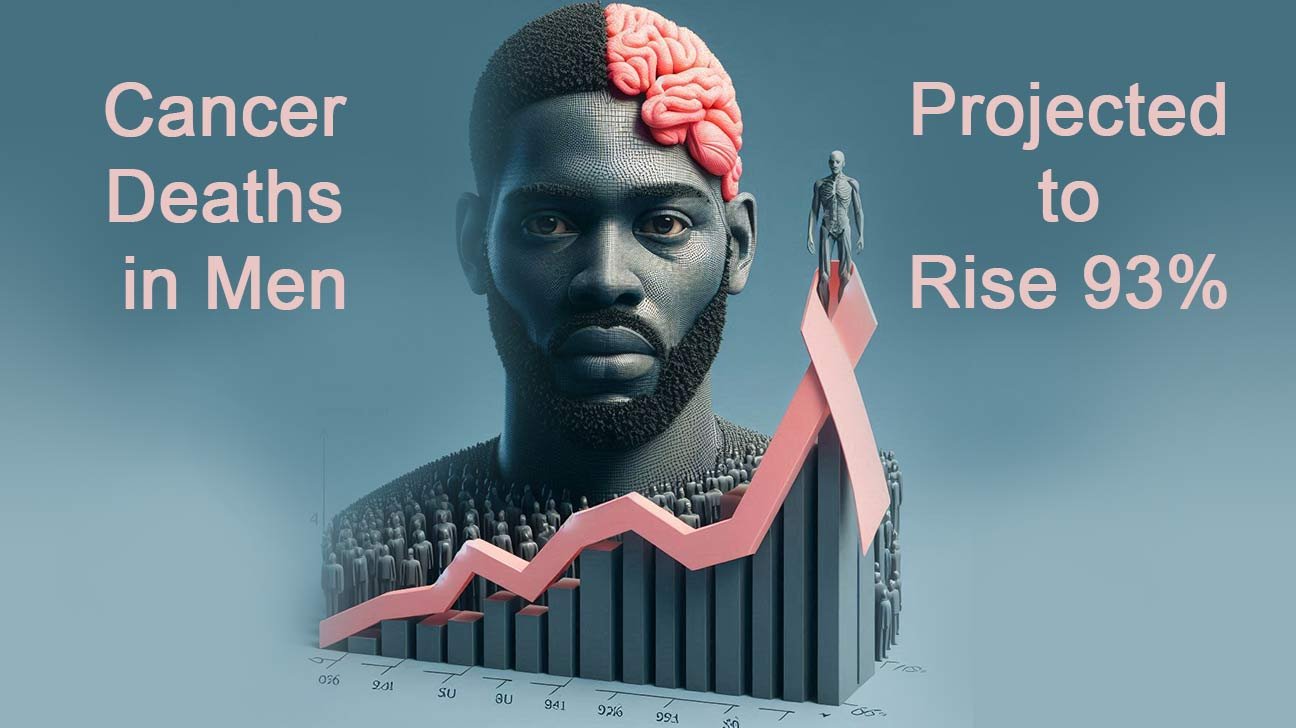
Cancer-related deaths among men are expected to surge by 93% by 2050. This alarming projection underscores a growing health crisis.
The forecasted increase in cancer fatalities for men poses a significant challenge for global health systems. As lifestyle factors and aging populations contribute to the rise, healthcare strategies must adapt to address this looming crisis. The staggering 93% rise requires urgent attention from policymakers, medical professionals, and researchers alike.
Early detection, improved treatment options, and targeted prevention campaigns could play crucial roles in curbing this trend. Public awareness and education on risk factors are also essential to combat the expected spike in cancer mortality among men. The fight against cancer is entering a critical phase, and the next few decades will be pivotal in shaping outcomes for male populations worldwide.
Cancer Deaths in Men
More Men Are Dying From Cancer. A New Study Helps Explain Why
A recent study sheds light on the alarming projection that cancer deaths among men could surge by 93% by 2050. This research offers insights into the reasons behind the increasing mortality rates, highlighting the urgent need for targeted interventions.
The alarming trend of rising cancer fatalities among men is cause for concern, prompting deeper investigation into the underlying factors. A recent study sheds light on the reasons behind this worrying increase, revealing insights that could be key to reversing the trend.
Lifestyle Factors And Cancer Risk
Cancer doesn’t arise in a vacuum. Several lifestyle choices have been linked to an increased cancer risk in men:
- Smoking habits: Tobacco use remains the leading cause of cancer and is responsible for a significant percentage of cancer deaths.
- Sedentary lifestyle: Lack of physical activity contributes to obesity, which is a known risk factor for various cancers.
- Dietary choices: Diets high in processed meats and low in fruits and vegetables have been associated with greater cancer risk.
Genetics And Cancer Susceptibility
Men inherit specific genes that may predispose them to certain types of cancer. These genetic markers can increase susceptibility and affect the body’s ability to fight off malignant cells. Understanding these hereditary factors is vital for early detection and prevention strategies.
Environmental Exposures And Cancer Incidence
We can’t overlook the impact of the environment on cancer rates:
- Occupational hazards: Men in certain industries are exposed to carcinogens like asbestos or benzene, heightening their cancer risk.
- Pollution: Air and water pollution have been linked to increased cancer cases, with men often more exposed due to job-related activities.
Advances In Cancer Detection And Reporting
Improved detection methods also contribute to the statistics:
- Enhanced screening: The rise in cancer deaths may partly be attributed to better detection techniques, which identify more cases that previously would have gone unnoticed.
- Accurate reporting: As medical record-keeping improves, cancer deaths are more accurately reported, which may inflate the perceived increase in rates.
The Role Of Healthcare Access In Cancer Treatment Outcomes
Access to healthcare is a determining factor in survival rates:
Men’s ability to obtain early and effective cancer treatment is heavily influenced by the availability of healthcare services. In areas with limited access, cancer death rates are notably higher. This disparity highlights the need for improved healthcare infrastructure and outreach.
What Can Be Done To Mitigate The Rise In Cancer Deaths?
Addressing this uptick in cancer fatalities requires a multifaceted approach:
- Public education campaigns: Increasing awareness about cancer risk factors and prevention methods is crucial.
- Policy changes: Legislation aimed at reducing exposure to known carcinogens can make a significant difference.
- Healthcare improvements: Enhancing access to quality healthcare and cancer screening programs can lead to earlier detection and better treatment outcomes.
The study in question not only underscores the urgency of the situation but also charts a potential path forward. By understanding why more men are succumbing to cancer, we can develop targeted interventions to combat this trend and save lives.
Cancer Rates In Males Higher Than Females
Recent studies indicate a striking surge in cancer deaths among men, with projections hitting a staggering 93% increase by 2050. This alarming trend underscores a significant gender disparity in cancer mortality rates, with males facing higher risks than females.
The looming shadow of cancer looms larger with each passing year, particularly among men. A recent study has projected a staggering 93% increase in cancer deaths for men by the year 2050. This alarming figure sheds light on a critical issue: cancer rates in males are significantly higher than in females.
Understanding The Gender Discrepancy In Cancer Rates
Research has consistently shown that men are more likely to develop cancer compared to women. This isn’t just a matter of chance; several factors contribute to this disparity. Here, we’ll explore some of the key reasons behind the higher cancer rates in males:
- Lifestyle choices: Men are more likely to engage in behaviors that increase cancer risk, such as smoking, excessive alcohol consumption, and unhealthy eating habits.
- Screening and prevention: Women are generally more proactive about their health, participating in regular screenings like mammograms and Pap tests, which can detect cancer early.
- Biological differences: There are inherent biological differences between men and women that may influence cancer risk and mortality, including hormone levels and differences in immune system functioning.
Understanding these factors is crucial in developing targeted interventions to reduce cancer rates among men.
Strategies To Combat Rising Cancer Rates In Men
Tackling the issue of rising cancer rates among men requires a multifaceted approach. By addressing the root causes and promoting healthier lifestyles, we can make a significant impact. Below are some strategies that could prove effective in this battle:
- Promote early screening and detection: Encouraging men to participate in regular cancer screenings can lead to early detection, significantly improving treatment outcomes.
- Educate on lifestyle modifications: Raising awareness about the impact of lifestyle choices on cancer risk can motivate men to adopt healthier habits.
- Enhance access to healthcare: Improving access to quality healthcare for men, particularly in underserved communities, can help in the early diagnosis and treatment of cancer.
By implementing these strategies, we can work towards reversing the troubling trend of rising cancer rates among men. The fight against cancer is a collective one, requiring the effort and commitment of individuals, healthcare professionals, and policymakers alike. Together, we can make a difference in the lives of millions of men at risk of cancer.
84% Increase In Cancer Incidence In Males
Recent studies reveal a concerning 84% surge in cancer diagnoses among men. This alarming trend underscores the urgent need for enhanced cancer awareness and preventive strategies.
Cancer is an ever-evolving adversary in the realm of public health, with statistics painting a concerning picture for the future. The forecast for 2050 suggests a staggering 93% rise in cancer-related mortality among men.
Such projections serve as a clarion call for immediate action, emphasizing the need for comprehensive strategies to mitigate this looming crisis.
The alarming uptick in cancer cases among men is not merely a number—it’s a reflection of diverse factors contributing to this health menace. Lifestyle changes, environmental triggers, and genetic predispositions converge to create a perfect storm, fueling the uptick in cancer incidence.
Here’s a closer look at the key contributors:
- Aging population: As life expectancy climbs, so does the probability of developing cancer. Older individuals have a higher risk as cells have had more time to accumulate genetic mutations.
- Lifestyle factors: Unhealthy diets, sedentary lives, and tobacco use skyrocket the risk. Each cigarette smoked and junk food consumed chips away at one’s health armor.
- Environmental exposures: Occupational hazards and pollutants are silent killers, often going unnoticed until their effects manifest as disease.
- Genetic susceptibility: Advances in genomics reveal that some men are inherently more vulnerable to certain cancers, necessitating targeted prevention efforts.
Recognizing these factors is pivotal in charting a course for cancer prevention and control. As we look to the future, it’s imperative to weave this understanding into public health policies and individual choices alike. Let’s engage in conversations that spur action, and together, we can alter the trajectory of cancer’s impact on society.
Why Are Males More Likely To Get Cancer?
Men are more susceptible to cancer due to a combination of lifestyle choices, occupational exposures, and less frequent medical check-ups. With projections indicating a staggering 93% increase in cancer deaths among men by 2050, it’s imperative to address these risk factors.
The alarming projection of cancer deaths in men by 2050 underscores the need for a deeper understanding of this trend. To unpack why males are more susceptible to cancer, we must examine a range of factors, from biological differences to lifestyle choices.
Biological Factors And Cancer Risk
Cancer, a complex disease with multifaceted causes, seems to affect men at a higher rate due to several biological factors:
- Genetic predisposition: Certain genes that can predispose individuals to cancer are more prevalent or exclusively present in males.
- Hormonal influences: Testosterone, the predominant male hormone, has been linked to the promotion of cancer cell growth in specific types of cancer.
- Immune system variations: Research suggests that the male immune system may not be as robust in detecting and destroying cancer cells compared to females.
Lifestyle Choices Impacting Cancer Incidence In Men
It’s well-documented that lifestyle choices play a significant role in cancer risk. Men, in particular, tend to engage in behaviors that increase their likelihood of developing cancer:
- Smoking habits: Historically, men have had higher smoking rates than women, directly contributing to lung and other types of cancer.
- Alcohol consumption: Men are more likely to consume alcohol in quantities that can elevate their risk of cancer, especially liver and esophageal cancer.
- Dietary practices: A diet high in red and processed meats, which is more common among men, has been associated with a higher risk of colorectal cancer.
Occupational Exposures And Male Cancer Rates
Men often work in hazardous environments that expose them to carcinogens:
- Industrial chemicals: Occupations in industries like construction or manufacturing may expose men to asbestos, benzene, or other cancer-causing agents.
- UV exposure: Outdoor jobs, predominant among males, increase the risk of skin cancer due to prolonged exposure to ultraviolet radiation.
Healthcare Utilization And Cancer Detection In Men
The approach men take towards healthcare can influence cancer outcomes. Typically, men are less proactive about health screenings:
- Screening avoidance: Men tend to skip routine health check-ups, leading to later-stage cancer diagnoses when treatment options are limited.
- Stigma and awareness: There’s often a stigma associated with medical help-seeking behavior in men, reducing the likelihood of early cancer detection.
By shedding light on these aspects, we can better understand the projected rise in cancer deaths among men and work towards targeted prevention and treatment strategies. Engaging in healthier lifestyles, reducing exposure to occupational hazards, and improving healthcare utilization can potentially alter this troubling trajectory.
What Can Be Done To Lower Cancer Risk?
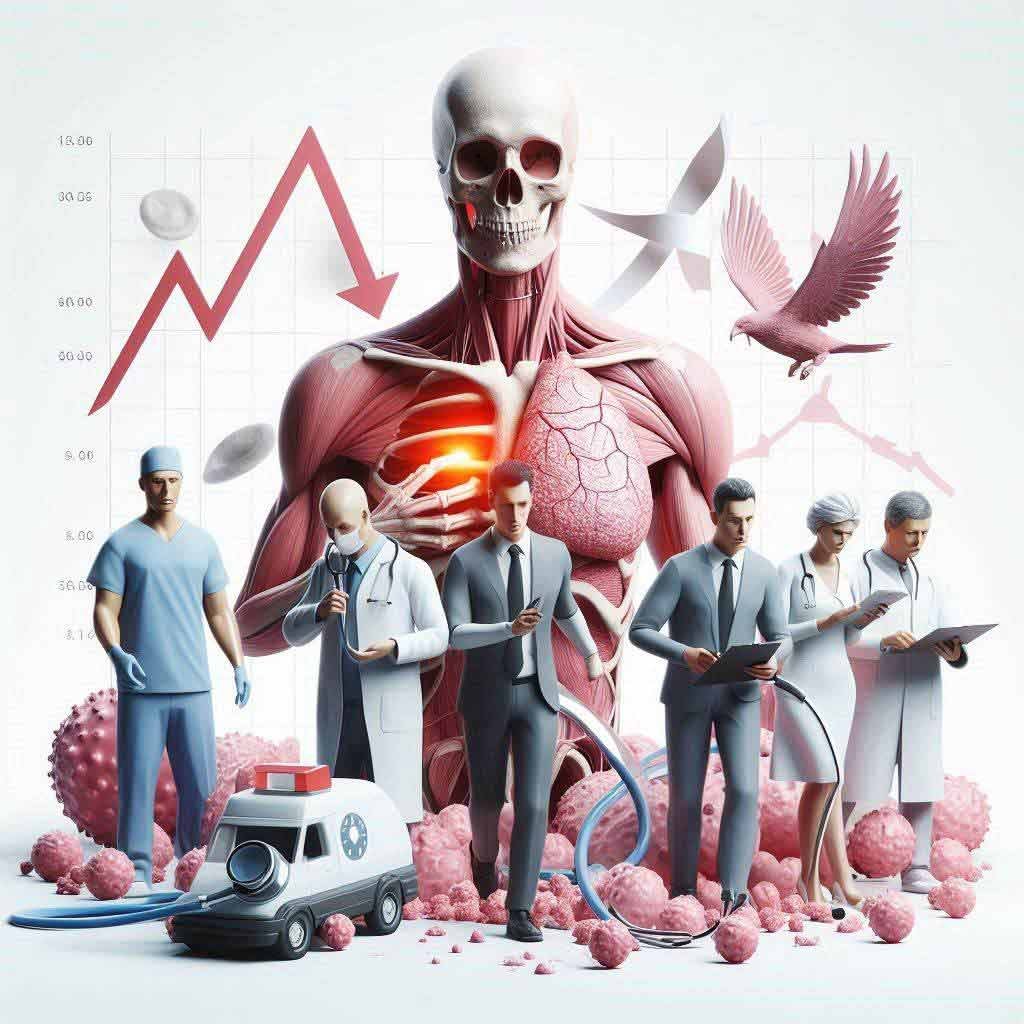
With cancer deaths in men projected to soar by 93% by 2050, adopting healthier lifestyles is crucial. Regular exercise, a balanced diet, and avoiding tobacco can significantly reduce cancer risk.
With the alarming projection that cancer deaths in men could see a near doubling by the year 2050, it’s more important than ever to focus on preventive measures.
By adopting certain lifestyle changes and staying informed, we can all take steps to safeguard our health against this formidable disease.
Embracing A Healthier Diet
The foods we consume play a pivotal role in our overall health and can significantly impact our cancer risk. A diet rich in fruits, vegetables, whole grains, and lean proteins provides essential nutrients that can help protect against cancer.
- Increase fruit and vegetable intake: These are packed with vitamins, minerals, and antioxidants that combat harmful free radicals.
- Choose whole grains over refined: Whole grains contain more fiber, which has been linked to a lower risk of certain types of cancer.
- Limit processed and red meats: Studies have shown that reducing these can decrease the risk of colorectal cancer.
Regular Exercise: A Cancer-fighting Tool
Physical activity is not just about weight management. It’s a powerful weapon in the fight against cancer. Regular exercise helps to maintain a healthy weight, reduce inflammation, and improve immune function, all of which are crucial in reducing cancer risk.
- Aim for at least 150 minutes a week: Moderate-intensity activities like brisk walking or cycling can make a difference.
- Incorporate strength training: Twice a week, engage in activities that build muscle mass and strength.
- Stay consistent: Make exercise a regular part of your routine for long-term benefits.
Avoiding Tobacco And Limiting Alcohol
Tobacco use is the most preventable cause of cancer worldwide. It’s vital to avoid all forms of tobacco to significantly lower your risk. Similarly, limiting alcohol consumption can reduce the risk of various cancers.
- Quit smoking: Seek support programs and cessation aids to overcome addiction.
- Avoid secondhand smoke: It can be just as harmful as smoking directly.
- Limit alcohol intake: Stick to the recommended guidelines for alcohol consumption.
Regular Health Screenings And Vaccinations
Staying on top of your health by getting regular screenings can catch cancers early when they are most treatable. Vaccinations, such as those for HPV and Hepatitis B, can prevent viruses that may cause cancer.
- Follow screening schedules: Adhere to the recommended timeline for tests like colonoscopies and PSA tests.
- Get vaccinated: Protect yourself against viruses linked to cancer.
- Discuss family history with your doctor: It can influence the frequency and type of screenings needed.
Reducing Environmental And Occupational Risks
Our surroundings, both at work and home, can expose us to carcinogens. It’s important to be aware of and minimize such risks.
- Limit exposure to harmful substances: Be aware of chemicals and other hazardous materials you may encounter in your job and take protective measures.
- Test your home for radon: This colorless, odorless gas is a leading cause of lung cancer.
- Practice sun safety: Protect your skin from ultraviolet radiation to reduce the risk of skin cancer.
Through these proactive measures, we can contribute to a future where the startling statistic of a 93% rise in cancer deaths is averted. It begins with individual action and a commitment to health that extends beyond the personal and into the collective consciousness.
Let’s start today, for a healthier tomorrow.
Takeaway
A startling projection indicates that by 2050, cancer fatalities among men could surge by an alarming 93%. This dramatic increase underscores the urgent need for advancements in cancer research and prevention strategies.
The stark projection of cancer deaths in men almost doubling by the year 2050 sends a clear message: the need for urgent action in healthcare strategies and lifestyle changes. This significant uptick is not just a statistic; it’s a call to arms for individuals, communities, and policymakers to come together in combating this growing threat.
Understanding The Drivers Behind The Rise
While the figures are alarming, comprehending the factors contributing to this rise can help in formulating effective countermeasures:
- Aging population: As life expectancy increases, so does the risk of developing cancer.
- Lifestyle choices: Poor diet, lack of physical activity, and tobacco use remain significant risk factors.
- Access to healthcare: Disparities in healthcare accessibility and quality can lead to late-stage diagnosis and lower survival rates.
Steps To Mitigate The Increase In Cancer Deaths
It’s not all doom and gloom; there are actionable steps that can help turn the tide against the rising cancer mortality rates:
- Prevention is key: Engaging in regular exercise and maintaining a healthy diet can drastically reduce cancer risk.
- Early detection saves lives: Regular screening and awareness of cancer symptoms can lead to early diagnosis and better outcomes.
- Advocacy and policy change: Pushing for better healthcare policies and funding for cancer research is essential.
The fight against cancer is a marathon, not a sprint. With concerted efforts in prevention, early detection, and systemic change, we can challenge the dire predictions and work towards a healthier future. Let’s answer this call to action with unwavering resolve and hope for progress.
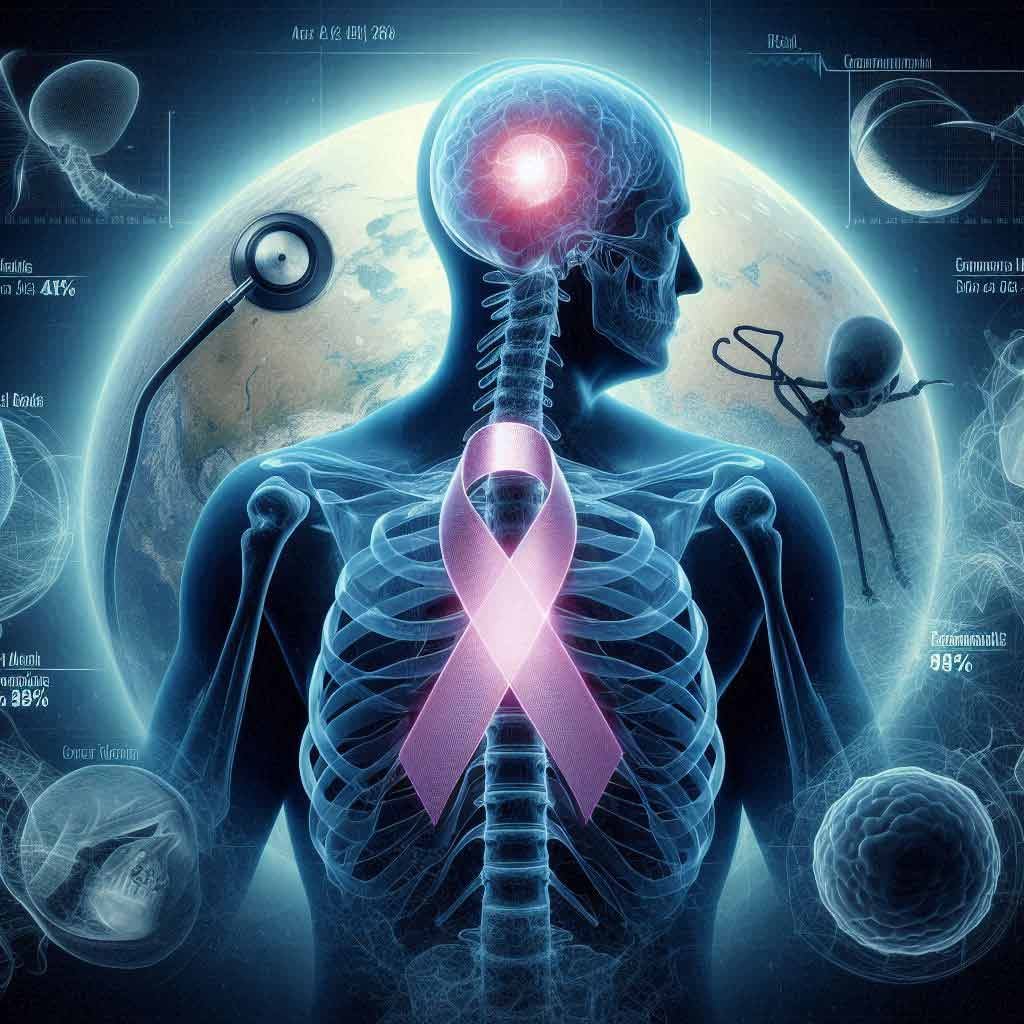
Frequently Asked Questions
What Cancer Is Increasing In Trend In Death Rate For Males?
Liver cancer is showing an upward trend in death rates among males.
How Many People Will Have Cancer By 2050?
By 2050, projections indicate that nearly 30 million people worldwide will receive a cancer diagnosis annually. This significant increase underscores the urgent need for advancements in cancer research and prevention strategies.
How Much Has Cancer Increased In The Last 20 Years?
Cancer incidence has risen globally by about 20% over the past two decades. This increase largely reflects aging and growth of populations.
What Is The Projection For How Many People Will Have Cancer By 2030?
By 2030, global cancer cases are expected to reach 21. 6 million annually. This projection indicates a significant increase in cancer prevalence worldwide.
Conclusion
The startling projection of a 93% increase in cancer deaths among men by 2050 demands urgent action. Awareness, early detection, and advanced treatments are key. Together, we can combat this rise. The future of men’s health hinges on our collective efforts.
Let’s make a change, starting now.

